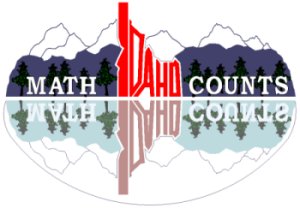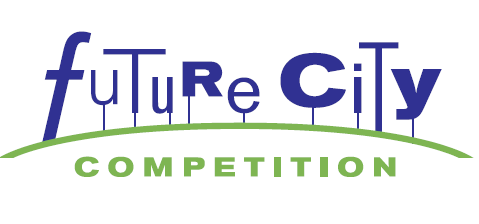|












| |
Idaho Society of Professional Engineers
Friday Update – 09/12/08
UPCOMING EVENTS:
 |
September 19,
2008 -
ISPE Magic
Valley Chapter Meeting - 12:00 - 1:00 PM - Riedesel Engineering Inc, 202
Falls Avenue, Twin Falls Please RSVP to
Josh Baird by Wednesday, September
17th. |
 |
September 23,
2008 – ISPE
Southwest Chapter Noon Meeting – 12:00 Noon – URS Training Room
|
 |
October 24, 2008
–
PE & PS Examinations – Boise Idaho |
 |
October 25, 2008 -
FE (aka EIT) and FS (aka LSIT) Examination - Boise, Idaho, Pocatello,
Idaho, Moscow, Idaho |
 |
January 10, 2009
– Future City Regional
Competition – Boise State University |
 |
February 15 –
21, 2009 –
Engineers Week |
 |
March 14, 2009 –
State MATHCOUNTS Competition – Boise State University, Boise, Idaho |
 |
April
24, 2009 –
PE & PS Examinations – Boise Idaho |
 |
April 25, 2009 -
-
FE (aka EIT) and FS (aka LSIT) Examination - Boise, Idaho, Pocatello,
Idaho, Moscow, Idaho |
 |
May 8, 2009
-
Raytheon MATHCOUNTS National Competition – Disney World, Orlando, Florida |
 |
June 11 - 12, 2009 - ISPE 2009 Annual Meeting - Coeur d'Alene, Idaho |
 |
October 23, 2009
-
PE & PS Examinations – Boise Idaho |
 |
October 24, 2009 -
FE (aka EIT) and FS (aka LSIT) Examination - Boise, Idaho, Pocatello,
Idaho, Moscow, Idaho |

NSPE FALL EDUCATION SEMINARS
Develop and hone your professional skills—without leaving your
desk—by participating in one of NSPE's upcoming Web seminars. Set aside 90
minutes in your workday to gain insight into today's hottest topics from the
field's most knowledgeable leaders.
Slips, Trips, & Falls Part I
September 17, 1:30–3:00 p.m. (Eastern)
Presented by Professional Engineers in Construction
In Part I of "Slips, Trips, and Falls: From an Engineering and Legal
Perspective" participants will develop an understanding of the why slips and
falls occur and the most common causes behind them. Moreover, they will learn
about injury statistics and trends as well as gravity, friction, and ergonomics.
This Web seminar will also examine the requirements and codes set forth by the
various governing agencies that help to keep us safe including state "premises
liability" laws and standards of reasonable care and analyze different types of
surfaces that most commonly cause slips, trips, and falls in residential and
commercial settings including walks and ramps, stairs, floor, wall openings, and
holes.
ETHICS FORUM:
The Engineer's Obligation to the Public, to Employers/Clients, and to the
Profession.
September 24, October 22, and November 19, 12:30–1:30
p.m. (Eastern)
Session 1: September 24, The Engineer's Obligations to the Public (1.0 PDH)
Session 2: October 22, The Engineer's Obligation to Employers/Clients (1.0 PDH)
Session 3:
November 19, The Engineer's Obligation to the Profession (1.0 PDH)
The Balance of Full-time and Contingent Labor in Engineering Today
October 2, 1:30–3:00 p.m. (Eastern)
Presented by Jamie Parker, President & COO of Adecco
Community and Media Relations
October 14, 1:30–3:00 p.m. (Eastern)
Presented by Professional Engineers in Government
Slips, Trips, & Falls Part II
October 15, 1:30–3:00 p.m. (Eastern)
Presented by Professional Engineers in Construction
Construction Phase Risk Management:
Critical Issues in Construction Contract Administration
November 5, 1:30–3:00 p.m. (Eastern)
Presented by Professional Engineers in Construction
How
to Gain Recognition for your Projects Through Public Relations
November 12, 1:30–3:00
p.m.
(Eastern)
Presented by Professional Engineers in Private Practice
Information at
http://www.nspe.org/Education/WebSeminars/index.html
ISPE SINCERELY APPRECIATES THE SUPPORT OF ALL OF OUR
CURRENT 2008 - 2009 SUSTAINING
ORGANIZATIONS:
B & A
Engineers, Inc
Elkhorn Engineers
G & S
Structural Engineers
J.M. Miller
Engineering Inc
J-U-B
Engineers, Inc
Land
Solutions, Land Surveying & Consulting
Mason &
Stanfield Inc
Materials
Testing & Inspection Inc
MWH
Progressive
Engineering Group Inc
Quadrant
Consulting, Inc
Riedesel
Engineering Inc
Schiess &
Associates
Smarter
Process Inc
Stapley
Engineering
Terracon
TerraGraphics
Environmental Engineers Inc
Walker
Engineering
Please consider joining these great companies in
becoming an
ISPE Sustaining Organization. ISPE offers the Sustaining
Organization category of membership to enhance the visibility of your commitment
to ISPE and the engineering profession. Your membership will allow us to better
serve the engineering community through promoting engineering and ethics, and
supporting the needs of the engineer including professional development.
If you are interested in becoming a
Sustaining Organization, please
contact the ISPE office at
ispe@idahospe.org.

MATHCOUNTS PROBLEM OF THE WEEK
Can you solve this MATHCOUNTS problem? The answer will appear in next week's
edition of the Friday Update!
The Issues By The Numbers - The Problems
The chart below shows the number of “mentions” we’ve seen of each issue by
each candidate during this campaign season as of the afternoon of Thursday,
September 4 (before McCain’s Convention Speech.) Use this data to answer the
following questions.
|
|
Obama |
McCain |
|
Iraq
War |
3571 |
2234 |
|
Economy/Budget |
1827 |
1503 |
|
Abortion |
790 |
505 |
|
Health Care |
642 |
509 |
|
Environment |
424 |
317 |
|
Immigration |
350 |
324 |
|
Globalization |
208 |
151 |
|
Education |
115 |
47 |
|
Civil Rights |
7 |
3 |
“Issue Coverage Tracker”. Washington Post.
http://projects.washingtonpost.com/2008-presidential-candidates September 4,
2008.
According to the table, what percent of the total number of “mentions” between
the two candidates have related to education? Express your answer to the nearest
tenth.
--------------------------------------------------------------------------------
Which candidate has devoted a higher percentage of their issue “mentions” to the
issue of health care?
--------------------------------------------------------------------------------
What is the positive difference in the percent of total “mentions” devoted to
the Iraq War and total “mentions” devoted to the Economy/Budget? Express your
answer to the nearest tenth.
Answer to the last MATHCOUNTS problem:
His time in the 100m race was 9.69 seconds. If he had run the 200m race at the
same speed, it would have taken him twice as long, which is 9.69 x 2 = 19.38
seconds. Because he ran the 200m in less time, his average speed was actually
greater in the 200m race.
--------------------------------------------------------------------------------
His speed for 100m was (100 m/9.69 sec) * (1 mi/1609.344 m) * (3600 sec/hr) =
23.08 mi/hr, and his speed for 200m was (200 m/19.30 sec) * (1 mi/1609.344 m) *
(3600 sec/hr) = 23.18 mi/hr.
--------------------------------------------------------------------------------
Running at his 100m-race rate, Usain would run a mile in (9.69 sec/100
m)(1609.344 m/1 mi) = 155.945 seconds. Running at this 200m-race rate, Usain
would run a mile in (19.30 sec/200 m)(1609.344 m/1 mi) = 155.302. Now we can
find the difference.
155.945 – 155.302 = 0.6 seconds, to the nearest tenth.
--------------------------------------------------------------------------------
*** Answers will vary, but middle school student track-and-field athletes can
run 100m in about 13 seconds and 200m in about 27 seconds. Those are average
speeds of 17.21 mi/hr and 16.57 mi/hr, respectively.
If you want to see last week's problem again, click
http://mathcounts.org/NETCOMMUNITY/Page.aspx?pid=1350&srcid=1227
Idaho Society of Professional Engineers
PO Box 170239
Boise, ID 83717-0239
208-426-0636
Fax: 208-426-0639
E-Mail: ispe@idahospe.org
Web Site: www.Idahospe.org
| |

ISPE
MATHCOUNTS
Program

National Engineers Week - Future City Competition

Board of Professional Engineers and
Professional Land Surveyors
--News
Bulletins
--Meeting
Minutes


|
 Idaho
Society of Professional Engineers
Idaho
Society of Professional Engineers